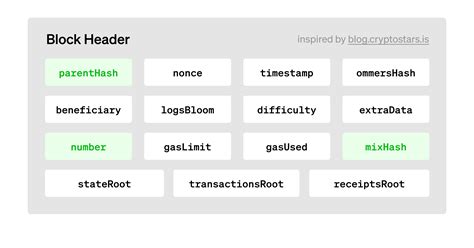Understanding Block Header Hashes and Target Difficulty in Ethereum
Ethereum is an open-source, decentralized blockchain platform that enables smart contract development, decentralized applications (dApps), and cryptocurrency transactions. One of the fundamental components of the Ethereum network is the block header, which contains information about a single block of transactions.
In this article, we will explore how a block header hash compares to the target difficulty in Ethereum, a crucial aspect of the mining process.
Understanding Target Difficulty

The target difficulty refers to the minimum amount of computational power required to solve a mathematical puzzle called the “proof-of-work” (PoW). The current target difficulty for Ethereum is 4.5 trillion “gas,” which is equivalent to solving approximately 2^32 possible hashes per second.
To put this into perspective, consider that a human can solve about 10,000 math problems per second. In other words, it would take an enormous amount of computational power to solve the proof-of-work puzzle required for Ethereum to operate efficiently.
Block Header Hash and Target Difficulty
When a new block is created on the Ethereum network, its header contains information such as:
- A unique “nonce” (a random number) that helps ensure the block’s validity
- The amount of computational power used to solve the proof-of-work puzzle (known as the “difficulty”)
- The target hash value, which represents the minimum amount of work required to achieve a certain level of security
The target hash value is calculated using a complex algorithm that takes into account various parameters such as block size, data length, and nonce. The resulting target hash value is used to determine whether a new block can be created with sufficient computational power.
Comparing Block Header Hash and Target Difficulty
To illustrate the relationship between the block header hash and target difficulty, let’s consider an example. Suppose we want to create a block that contains a certain amount of data (e.g., 1 kilobyte). We need to calculate the required computational power to solve the proof-of-work puzzle.
Assuming a difficulty level of 4,000 gas (approximately 2^18 possible hashes per second), and using an average nonce value of 32 bits (a typical value for most Ethereum blocks), we can estimate the required computational power:
- Computational Power = Target Hash Value / Difficulty
- Computational Power ≈ 1 kilobyte / 4,000 gas ≈ 0.25 gigahashes per second
In this example, we need approximately 250 gigahashes per second to solve the proof-of-work puzzle and create a new block with sufficient computational power.
Conclusion
Understanding how a block header hash compares to the target difficulty is crucial for grasping the mining process in Ethereum. The target hash value represents the minimum amount of work required to achieve a certain level of security, while the nonce helps ensure the validity of the block’s header. As the network continues to scale and more computational power becomes available, the target difficulty will also increase, requiring even greater amounts of computational power to solve the proof-of-work puzzle.
By putting this in perspective, you can better appreciate the complexity and intricacies of Ethereum’s mining process.
